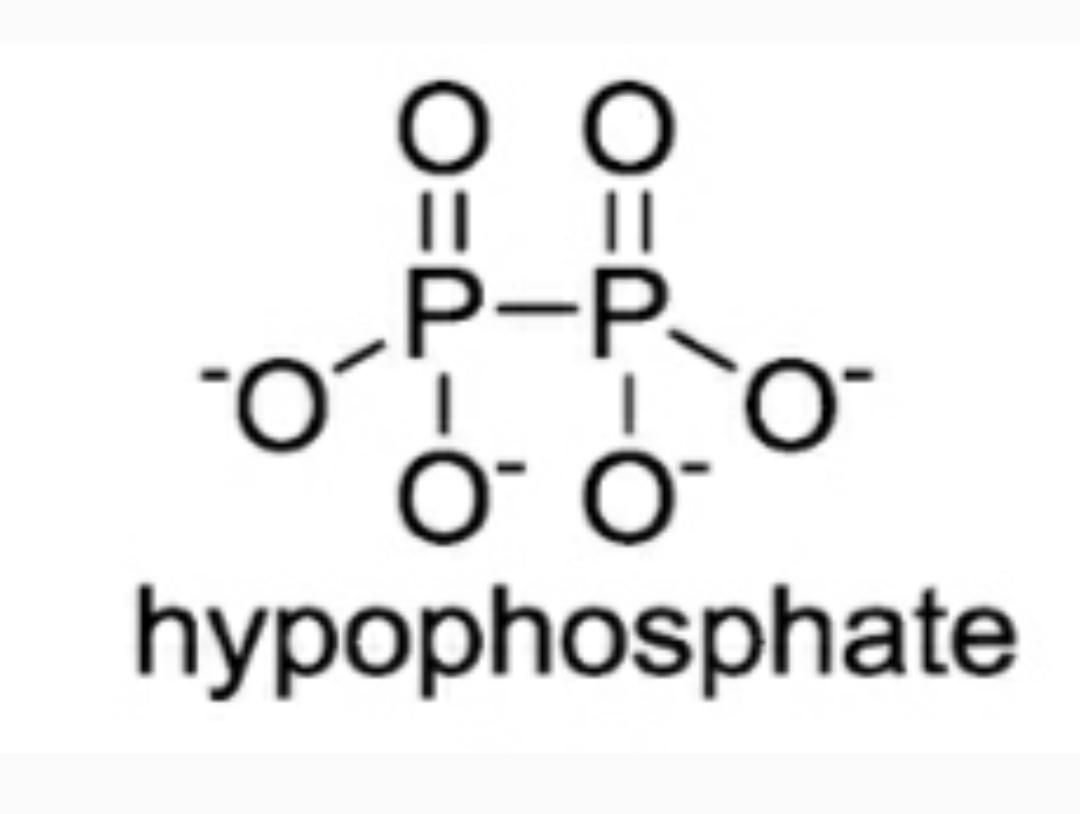
Find the number of $P-O$ bonds of identical length in hypophosphate ion.
Answer
221.7k+ views
Hint: Draw the structure of hypophosphate ion and then count the number of $P-O$ bonds in it which are of identical length.
Complete Step by Step Answer:
The oxyanion of Hypophosphoric acid ${{H}_{2}}P{{O}_{3}}$ ${{H}_{4}}{{P}_{2}}{{O}_{6}}$ is hypophosphate ion(${{P}_{2}}{{O}_{6}}^{4-}$). The structure of this ion has been a subject of speculation and controversy since hypophosphoric acid was discovered by Salzer in 1877 . Bell and Sugden showed conclusively that the salts which they studied were not derived from an acid of simple structure like ${{H}_{2}}P{{O}_{3}}$ and of the possible dimeric formulae for the acid . In this way the structure for this hypophosphate ion is represented finally as:

Now since here in this structure there are negative charges present and double bonds on oxygen atoms, all atomic bonds between P and O( $P-O$) do resonate. As we know that in resonance all the bond lengths are of identical length due to the regular shift of double bond in each bond respectively. Thus , if we count the number of these bonds then we get the total number as 6.
Thus , the correct answer is 6.
Note: It should be known that when negative charge is present on an electronegative ion like that on oxygen and double bonds are present then resonance occurs and due to resonance only the total number of bonds will be 6. Some students take into account only the single bonds of $P-O$ and declare the final answer as 4 which is the wrong answer.
Complete Step by Step Answer:
The oxyanion of Hypophosphoric acid ${{H}_{2}}P{{O}_{3}}$ ${{H}_{4}}{{P}_{2}}{{O}_{6}}$ is hypophosphate ion(${{P}_{2}}{{O}_{6}}^{4-}$). The structure of this ion has been a subject of speculation and controversy since hypophosphoric acid was discovered by Salzer in 1877 . Bell and Sugden showed conclusively that the salts which they studied were not derived from an acid of simple structure like ${{H}_{2}}P{{O}_{3}}$ and of the possible dimeric formulae for the acid . In this way the structure for this hypophosphate ion is represented finally as:

Now since here in this structure there are negative charges present and double bonds on oxygen atoms, all atomic bonds between P and O( $P-O$) do resonate. As we know that in resonance all the bond lengths are of identical length due to the regular shift of double bond in each bond respectively. Thus , if we count the number of these bonds then we get the total number as 6.
Thus , the correct answer is 6.
Note: It should be known that when negative charge is present on an electronegative ion like that on oxygen and double bonds are present then resonance occurs and due to resonance only the total number of bonds will be 6. Some students take into account only the single bonds of $P-O$ and declare the final answer as 4 which is the wrong answer.
Recently Updated Pages
Types of Solutions in Chemistry: Explained Simply

States of Matter Chapter For JEE Main Chemistry

Difference Between Alcohol and Phenol: Structure, Tests & Uses

Conduction Explained: Definition, Examples & Science for Students

Balancing of Redox Reactions - Important Concepts and Tips for JEE

Atomic Size - Important Concepts and Tips for JEE

Trending doubts
JEE Main 2026: Application Form Open, Exam Dates, Syllabus, Eligibility & Question Papers

Derivation of Equation of Trajectory Explained for Students

Hybridisation in Chemistry – Concept, Types & Applications

Understanding the Angle of Deviation in a Prism

How to Convert a Galvanometer into an Ammeter or Voltmeter

Degree of Dissociation: Meaning, Formula, Calculation & Uses

Other Pages
Solutions Class 12 Chemistry Chapter 1 CBSE Notes - 2025-26

NCERT Solutions For Class 12 Chemistry Chapter 1 Solutions - 2025-26

The D and F Block Elements Class 12 Chemistry Chapter 4 CBSE Notes - 2025-26

NCERT Solutions for Class 12 Chemistry Chapter Chapter 7 Alcohol Phenol and Ether

NCERT Solutions ForClass 12 Chemistry Chapter Chapter 8 Aldehydes Ketones And Carboxylic Acids

JEE Advanced Marks vs Ranks 2025: Understanding Category-wise Qualifying Marks and Previous Year Cut-offs




